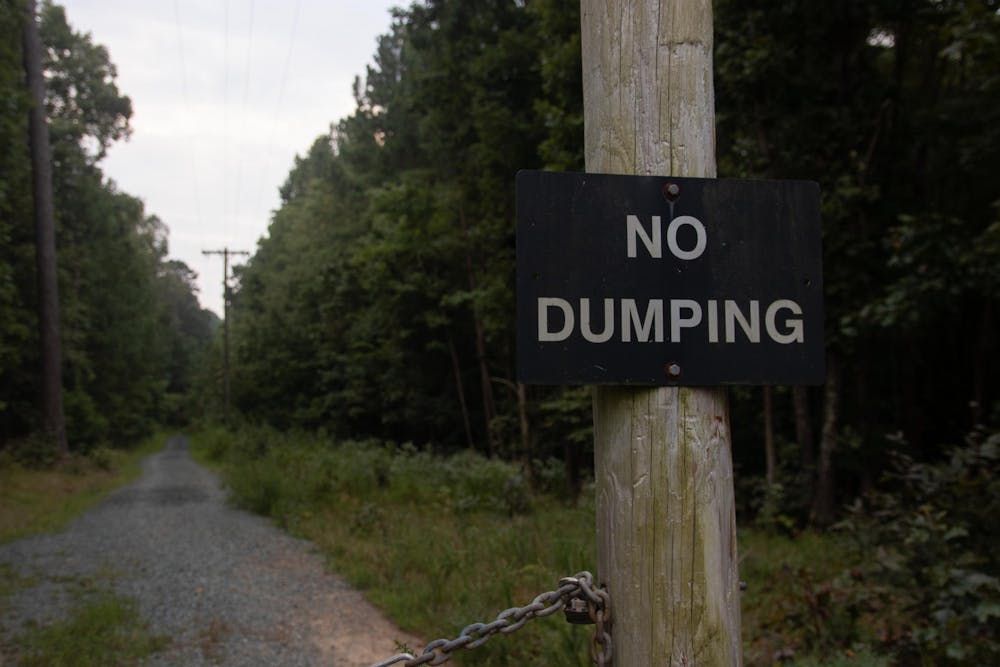Developing on this land is tricky because it is jointly owned by the Chapel Hill, Carrboro and Orange County governments, but lies within Chapel Hill's zoning jurisdiction. This means decisions about the land are made by Chapel Hill Town Council, then approved by the Carrboro Town Council and Orange County Board of Commissioners.
The future of the Greene Tract has been debated for decades now. It was designated for development in 2002, and since then, there have have been several community engagement reports and environmental assessments for what to do with the land.
The most recent decision on the land came in July of 2019, when the three governments approved an environmental impact analysis that configured the development sites of the property to preserve critical environmental areas. The plan designates approximately half the acreage of the Greene Tract for preservation and the other half for development.
Issues surrounding the Greene Tract came into the public eye once again as a major part of local candidate platforms ahead of the municipal November elections. The new officials are likely to make a decision about the official realignment of the site in the 2021-2022 fiscal year.
Community Input and sustainable growth
Some people, like Chapel Hill Town Council candidate Adam Searing, see the resolution as a departure from original plans laid out in the "Rogers Road: Mapping Our Community’s Future" report in 2016. The document was commissioned by the Chapel Hill, Carrboro and Orange County local governments for RENA and the Marian Cheek Jackson Center to enact a community first plan for the property.
“If you actually open that report and read it, it’s very clear — it's (that) 80 percent of the whole property be preserved,” Searing said. “When you’ve gotten the community involved, that’s what they’ve said, when you get the County Commissioners involved, that’s what they’ve said again and again and again.”
The 2016 report outlines the desire to “ensure that large parts (80 percent) of the Greene Tract are permanently preserved as open, natural space.”
Searing said the departure from preserving 80 percent of the space is disregarding 20 years of written documents about what should happen on the Greene Tract.
Abel Hastings and Searing started a neighborhood group called the Friends of the Greene Tract Forest to get more people on board with their trail preservation message.
“The preservation of the Greene Tract is important for my generation, my children’s generation, my grandchildren’s generation, because as Chapel Hill grows, green space will become more and more important,” Hastings said. “The community is clearly leaning in the direction of preserving a significant portion of it.”
Hastings said the Greene Tract is used by people all over Orange County, not just the people who live directly adjacent to the property. But therein lies the issue.
To get the day's news and headlines in your inbox each morning, sign up for our email newsletters.
The people who determine the future of the Greene Tract should be the ones who are most directly impacted by its development. People like Campbell, who was on the commission that put together the Mapping Our Community’s Future report, said he believes people like Friends of the Greene Tract are nitpicking a parenthetical — despite never having been part of the community discussion.
“Our purpose in that figure is that we didn’t want another trash collection or material recovery area on the Greene Tract,” Campbell said. “We knew how valuable the property was as far as nature itself, growing up that was basically our playground.”
Campbell, who has lived next to the Greene Tract since 1973, said knowing its environmental value is important. But more than preserving his childhood playground, he wants his neighbors in the Historic Rogers Road community to be able to support themselves and their families.
“You can’t just come in and shut down the vision, you need to be a part of it.” Campbell said. “They didn’t show up all these years, now suddenly they want to bring the biggest hammer to nail in a needle.”
The voices of the Historic Rogers Road community are the ones that need to be at the forefront of the discussion about the future of the community. Nobody is denying that there are recreational and environmental benefits to preserving green space, but this is about more than trails.
It’s about lifting up and centering Black voices and giving them a space to thrive in Chapel Hill. It’s about giving the single mother, who works two jobs and relies on the bus to get to work, access to a nearby grocery store. Or even giving housing to the firefighter that commutes from Hillsborough on a daily basis.
Recognizing the vision Campbell and others in Rogers Road have for their community means seeing them and their struggles.
@b_rappaport
opinion@dailytarheel.com
CORRECTION: A previous version of this story's photo caption incorrectly stated its location. The picture was taken at the Carolina North Forest. The Daily Tar Heel apologizes for this error.



